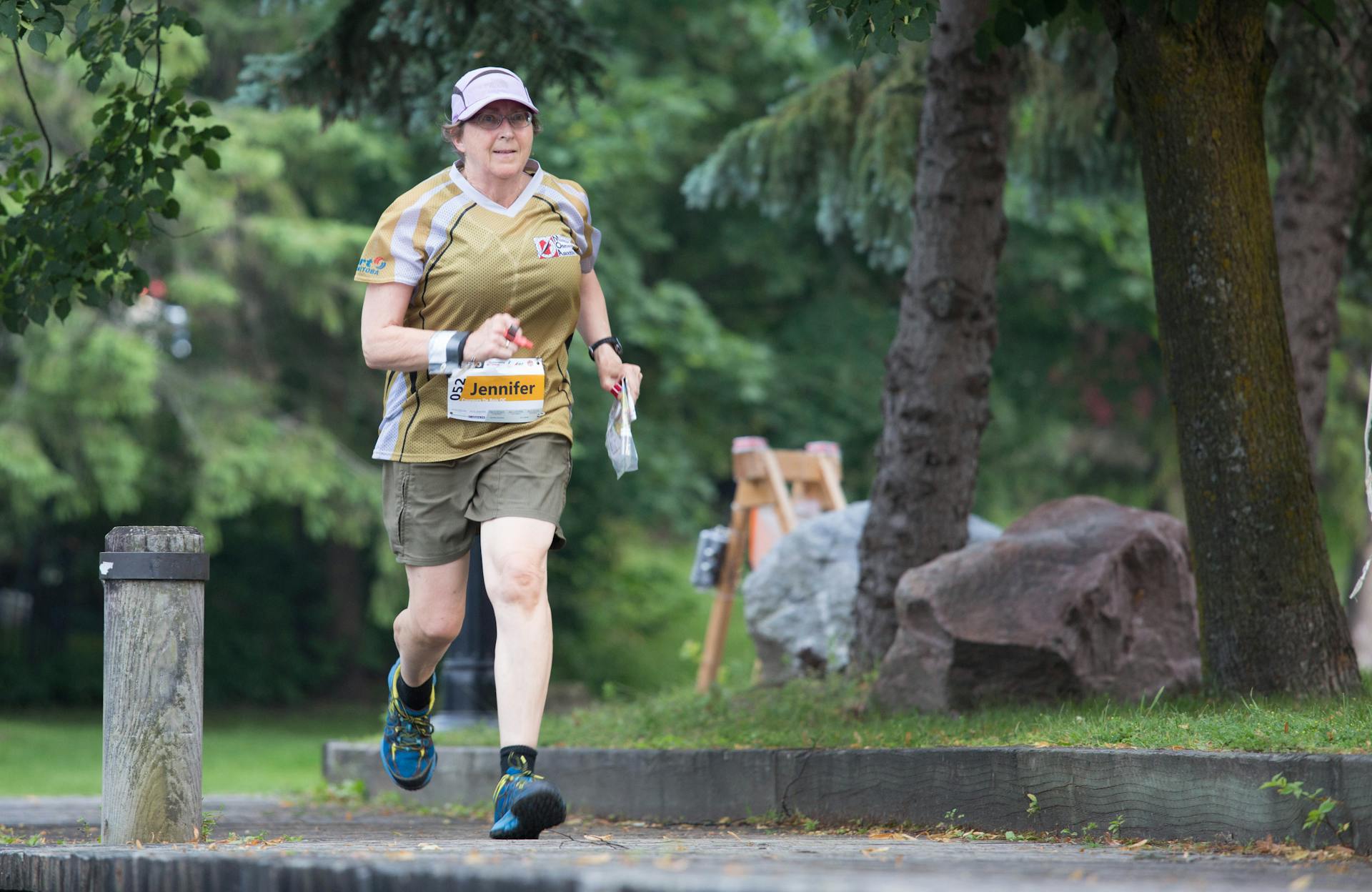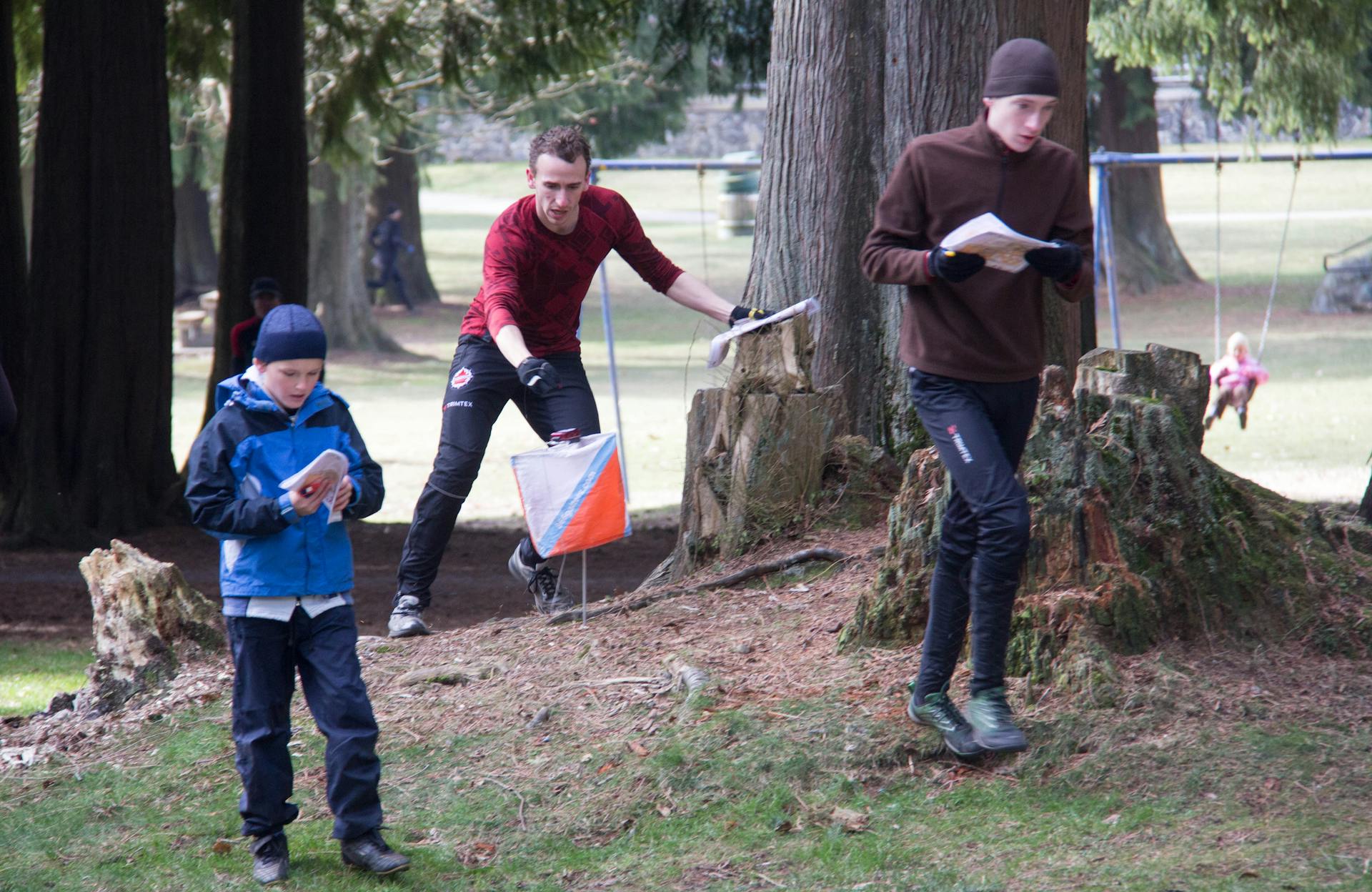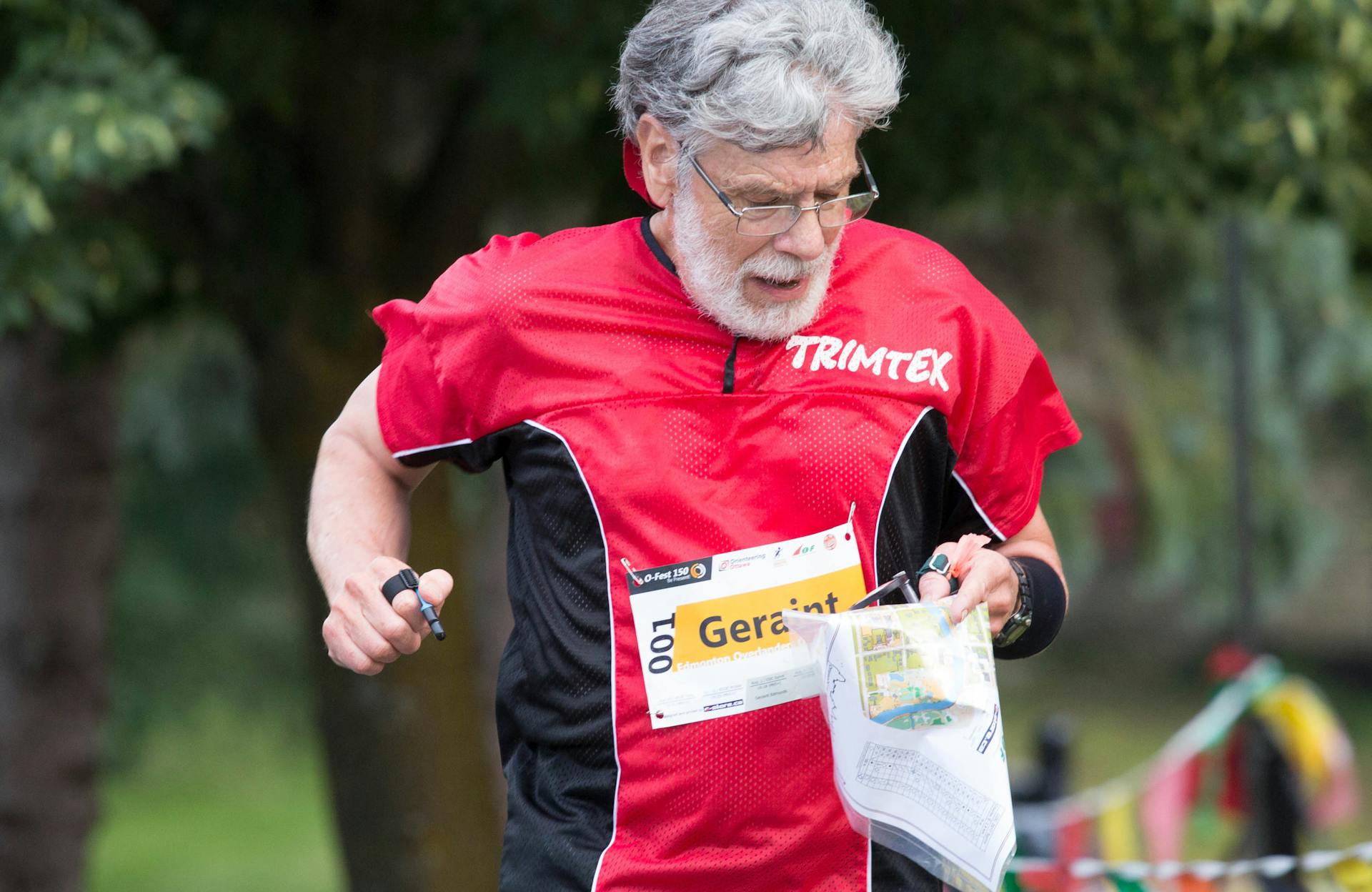What Is Orienteering?
Orienteering is a sport for everyone, regardless of age or experience. The competitive athlete can experience the exhilaration of running through the woods at top speed, while the recreational orienteer can enjoy the forest at a more leisurely pace. Most events provide courses for all levels: from beginner to advanced.
Navigation In Motion
The sport involves moving through terrain while map reading to help you choose the best route. The object is to run, walk, ski or bike to a series of points shown on the map, choosing routes–both on and off trail–that will help you find all the required points and get back to the finish in the shortest amount of time.

Checkpoints Along the Way
The checkpoints on a course are marked with orange and white flags, with some sort of device at each flag (such as a small hole punch or an electronic device) used to prove you’ve been there. Each checkpoint (we call them controls) is located on a distinct feature, such as a stream or trail junction, on top of a knoll or by some trees.

The Thinking Sport
Orienteering is often called the “thinking sport” because it involves map reading and decision-making in addition to a great workout. Any kind of map may be used for orienteering (even a street map), but the best ones are very detailed five-color topographic maps (1:4,000 – 1:15,000 scale) developed especially for the sport.

Tools For Navigating
At the core of orienteering are maps. These detailed maps give the orienteer lots of information to help them determine the best route between checkpoints. An orienteer may also use a compass to help orient the map to the terrain. We orienteer in both forested areas and urban areas.
-
Forest Map
-
Urban Map
-
Orienteering compass
